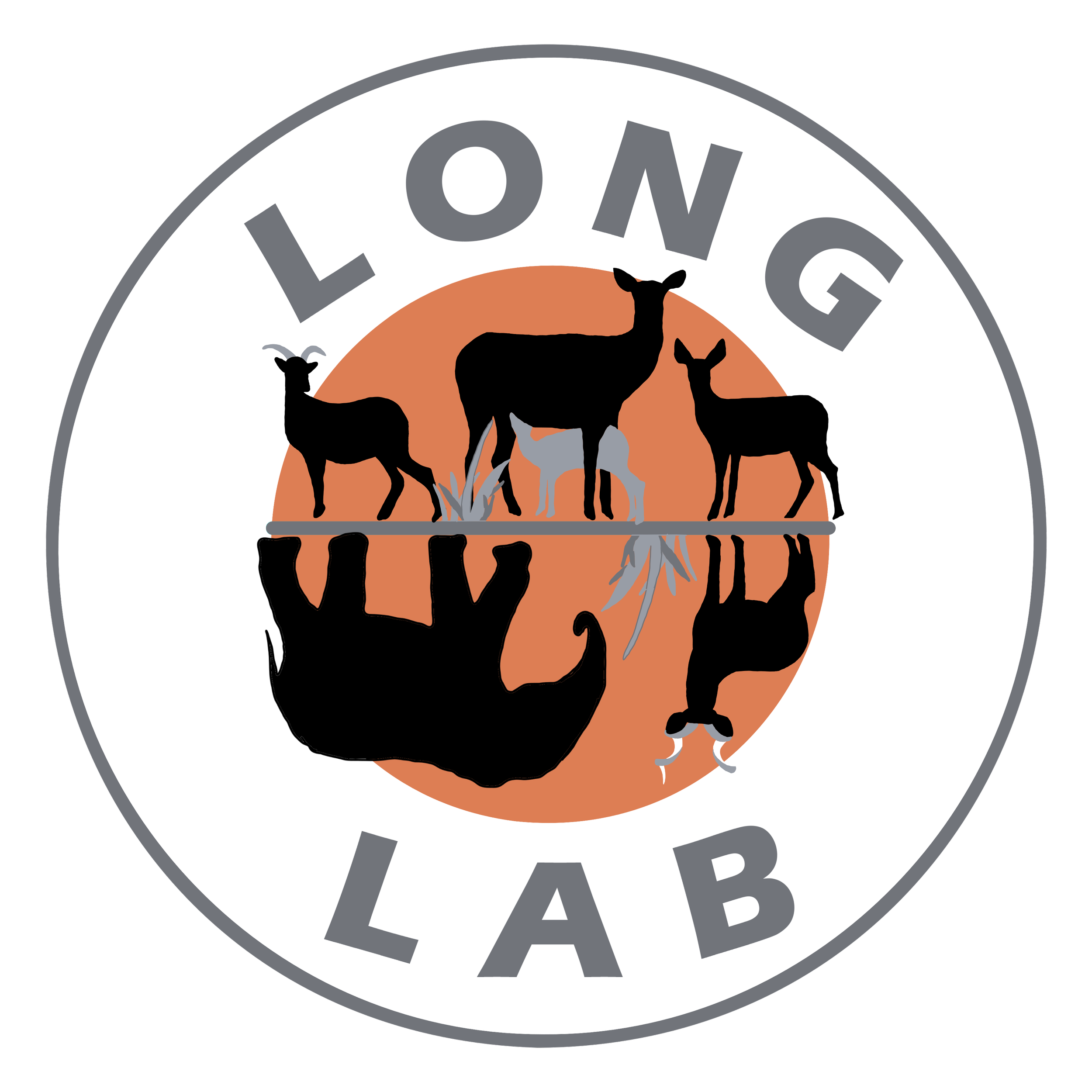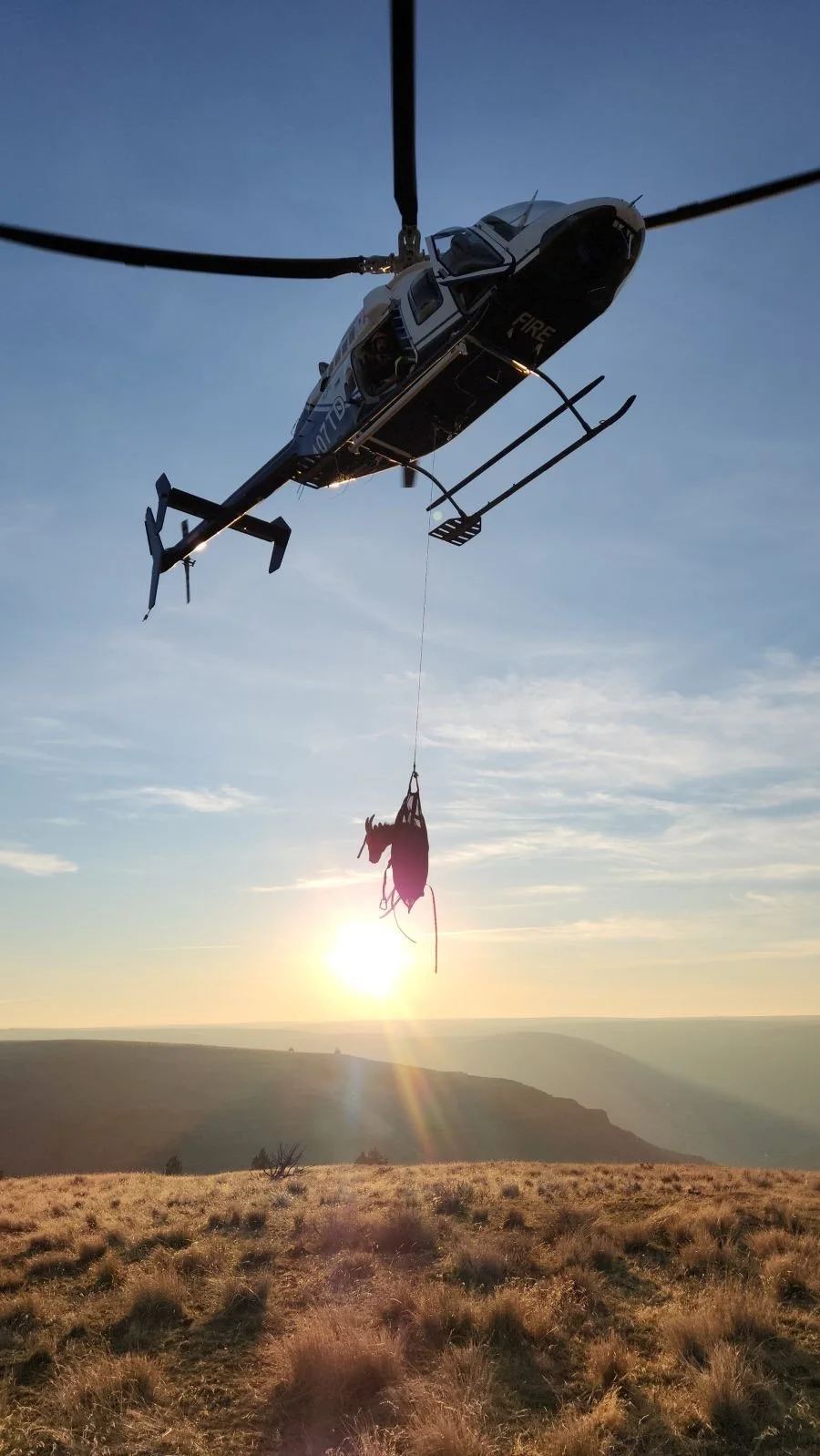Nutritional Ecology at Landscape Scales
Linking Nutrition and Social Dynamics to Reproductive Performance in a Disease-Free Bighorn Sheep Population
Bighorn sheep have experienced significant population declines across North America due to overharvest, habitat loss and degradation, and disease. This has prompted many agencies, including the Oregon Department of Fish and Wildlife, to initiate reintroduction efforts aimed at restoring populations to self-sustaining levels in areas of historical occupancy. The Lower John Day River herd represents one of Oregon's most prominent reintroduced populations of California bighorn sheep, and the herd has been steadily growing since its reintroduction in the late 1980s. From a population of approximately 450 animals in 2003, translocation efforts throughout the 1990s and early 2000s bolstered both genetic diversity and population numbers. Remarkably, the herd has remained disease-free throughout its recovery and is currently estimated to exceed 1,000 individuals. The absence of disease in this population, coupled with the rich forage landscape of the John Day River Canyon, offers a rare opportunity to study the interplay between nutrition, group dynamics, reproductive tradeoffs, and population performance without the confounding effects of persistent disease. The objectives of this project are to:
Develop a foodscape model for bighorn sheep in the John Day and evaluate how the nutritional resources available to that population compare to other Western bighorn sheep herds.
Evaluate how ewes navigate the trade-off between access to escape terrain and selection for high-quality forage as a function of their reproductive status.
Quantify how use of the foodscape by ewes impacts lamb survival and adult survival.
Assess how fission-fusion dynamics contribute to habitat selection and demographic outcomes within the John Day herd.
Study Location: John Day River, Oregon, USA.
Timeline: This project is being led by MS students Alexis Means and Emily Lowrimore, and you can learn more about it by watching this video on YouTube.
Effects of Nutrition on Behavior and Fawn Survival of Columbian Black-tailed Deer
Populations of black-tailed deer have declined by up to 30% across much of the species’ historic range since the 1980s. These declines have been attributed to changing quality and quantity of habitat, increased incidence of disease, and higher rates of predation, but the relative importance of each of these factors remains largely unknown. The overall goal of this project is to better understand relationships between the nutritional landscape (i.e., spatiotemporal variation in quality and abundance of forage) and black-tailed deer behavior and demography, with a focus on the influence of nutrition on fawn survival. We aim to provide wildlife managers with tools that will help them better manage black-tailed deer and their habitats in western Oregon. Specific objectives include:
Evaluate to what degree black-tailed deer are nutritionally limited in the Umpqua National Forest of southwest Oregon.
Determine whether and to what extent home-range and birth-site selection by female black-tailed deer prior to parturition influence fawn survival and success in the Umpqua National Forest, and to what degree such patterns are nutritionally mediated.
Evaluate how selection of the nutritional landscape by adult females during summer influences probability of fawn survival.
Study Location: Umpqua National Forest, Oregon, USA.
Timeline: This project was completed in the spring of 2024 by Katrina Lopez for her MS degree. Read Katrina’s thesis here.
Using Foodscape Models to Assess Habitat for Rocky Mountain Elk around Dworshak Reservoir
Dworshak Dam, located near Orofino, Idaho, was built in 1972 by the U.S. Army Corps of Engineers. The dam created a 55-mile reservoir and inundated 16,000 acres of elk winter range. In 1977, the U.S. Fish and Wildlife Service and Idaho Fish and Game established the Grandad Elk Mitigation Area to mitigate for lost elk wintering range. During the late 1970’s to mid 1980’s the Corps clear-cut and burned 3,000 acres of old-growth timber to improve elk habitat by increasing winter forage production. Over the past 40+ years, however, many of the treated stands aged into closed-canopy forest. As a result, the remaining open areas have been heavily impacted by elk herbivory, reducing vegetation productivity and drastically reducing the abundance of winter forage available to elk. The overall goal of this project is to provide the Corps with a dynamic, mechanistic model that can be used to quantify and predict spatiotemporal variation in the nutritional landscape available to elk in the Grandad Elk Mitigation Area as a function of remotely sensed data. Specific objectives include:
Determine the mean annual production of key forage species for elk in the elk mitigation area.
Determine the nutritional carrying capacity (i.e., the number of elk the landscape can support above a specified threshold of nutritional condition) of the elk mitigation area during winter and summer-autumn.
Identify key spatial (e.g., soil type, potential vegetation type, tree canopy cover) and temporal (e.g., precipitation, temperature) drivers of variation in forage production within the elk mitigation area.
Determine the relative importance of environmental versus density-dependent (i.e., herbivory by elk) factors limiting forage production in the elk mitigation area.
Study Location: Dworshak Reservoir, Idaho, USA.
Timeline: This project was completed in the fall of 2024 by Sarah Meronk for her MS degree. Read Sarah’s thesis here.
Linking Nutrition, Disease, Life-History Variation, and Performance in Bighorn Sheep
Disease (primarily pneumonia) has been linked to the episodic decline of bighorn sheep populations throughout their range, including in Idaho. Yet, a complete understanding of the factors that influence susceptibility of bighorn sheep to disease, or of the factors that influence the spread of disease within and among populations, remains elusive. Nutritional condition integrates a variety of complex responses of ungulates to their environment, and individuals in poor condition often have both a higher probability of contracting disease and a lower probability of survival once infected. Moreover, nutritional condition can strongly influence animal movements, which has important implications for the spread of disease. Some evidence suggests that because of their unique physiology and life history, bighorn sheep may be more sensitive to variation in the quality, abundance, or distribution of forage resources than other species of ungulates. The degree to which spatiotemporal variation in the nutritional landscape might modulate disease dynamics in bighorn sheep, however, has not been evaluated. This project is designed to address several core questions:
Is late-winter body condition of ewes related to subsequent neonatal mortality from a variety of sources?
Is early lamb survival modulated by nutrition in bighorn sheep herds that occupy different nutritional landscapes?
How does late-winter body condition influence use of the nutritional landscape by ewes, and how do those behavioral decisions affect lamb survival?
How does variation in the nutritional landscape across space and time influence movements of ewes, and what are the ramifications of those movements for lamb survival?
Study Location: Idaho, Washington and Wyoming, USA.
Timeline: This project was initiated in the fall of 2017. The first stage of the project was completed in 2021 by Nikie Bilodeau for her MS degree (read Nikie’s thesis here) and the second stage was completed in 2024 by Katey Huggler for her PhD (read Katey’s dissertation here).
Predicting Vital Rates of Elk
Pregnancy rates, which in ungulates are directly affected by nutritional condition in late summer, can strongly influence the finite rate of increase of a population (λ). As a result, information on pregnancy rates can be used by managers to predict population trends and make decisions ranging from allowable harvest to access restrictions. Reliably quantifying variation in nutritional condition and/or associated vital rates, however, has previously required the capture and handling of numerous individuals from each population of interest, making those data expensive, time-consuming, and risky to collect. Modern vegetation indices such as NDVI and EVI provide a mechanism for mapping the nutritional landscape available to ungulates, but thus far few researchers have attempted to link those indices with on-the-ground measures of forage quality and abundance, as well as behavior, condition, and vital rates of large herbivores. The primary objectives of this project are to: 1) model the relationship between remotely sensed vegetation indices and empirical estimates of spatiotemporal variation in forage quality and abundance for elk; and 2) combine the resulting forage model with data on elk habitat selection and pregnancy rates to model spatiotemporal variation in pregnancy rates as a function of habitat quality at a Statewide scale.
Study Location: Idaho, USA.
Timeline: This project was completed in the spring of 2019 by Sierra Robatcek for her MS degree. Read Sierra’s thesis here.
Fitness Consequences of Interference Competition
Over the past several decades, mule deer populations have declined precipitously throughout their historic range in western North America. At the same time, elk populations have remained stable or have increased. Accordingly, interference competition with elk has been hypothesized to be a leading cause of mule deer declines. Despite growing evidence that such competition occurs, however, the mechanisms by which interference competition might indirectly impact fitness of mule deer (a necessary prerequisite for causing population declines) have not been established. The goals of this project are to understand (a) whether elk displace mule deer from the most favorable parts of the nutritional landscape, (b) whether that displacement translates into effects on early winter body condition (and thus, ostensibly, fitness), and (c) whether the effects of interference competition are modulated by individual variation in mule deer behavior.
Study Location: Starkey Experimental Forest and Range, Oregon, USA.
Timeline: This project was completed in the spring of 2018 by Jennifer Merems for her MS degree. Read Jen's thesis here.







